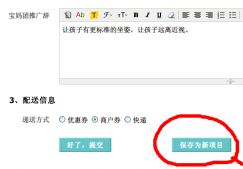一、前言
这篇文章主要是记录一下php生成静态页面的大致步骤,关于页面静态化,大家想必都听说过,但是真正用的时候反而不是很多。有些页面考虑到访问量比较大,页面结构又不常改动的,比如新闻公告等,可以考虑做成静态页面放在服务器上,这样第一是能抗住大流量的访问,第二也是更加安全一些,打开速度上有保证。
二、正文
1、什么是静态化
就比如我们平时写项目的时候,大部分的页面都是会传参数进去,通过php标签把这些参数展示出来。因为我们的参数随时可以变化,所以页面上的内容也跟着参数变化,这就是动态化的页面。与之相反,静态化就是纯粹的html,页面上的内容不需要通过php或者java等编程语言来改变。
关于静态化的优点,网上也都说的很清楚了,这边不再一一赘述,总之就是打开速度够快,能抗住大流量访问。
2、静态化写法
(1)第一种写法是通过ob_start()缓存来输出
在php文件中编写html代码,然后用bo_get_content获取到,然后输出到html文件,类似于:
|
1
2
3
4
5
6
7
8
9
10
11
12
13
14
15
16
17
18
19
|
<?php//打开输出控制缓存ob_start();echo "<html><head><title>test页面</title></head><body>Hello world</body></html>";//获取缓冲区的内容$out = ob_get_contents();//关闭输出缓存ob_end_clean();//打开test.html文件开启写入权限$fp = fopen("test.html", "w");if (!$fp) {echo "Fail";die;} else {//写入文件fwrite($fp, $out);//关闭文件fclose($fp);echo "Success";} |
这种写法个人感觉会稍微乱一点,而且如果页面复杂的话,写出来的php+html代码会有些杂乱,所以博主选用的是第二种方法。
(2)提前写好模板页,然后进行替换
先准备好静态文件,然后把要替换的部分标出来,如{title},在php程序中用file_get_content获取html文件的内容,然后进行替换,替换之后保存为文件。
模板页:
|
1
2
3
4
5
6
7
8
9
10
11
12
13
14
15
16
17
18
19
20
|
<!DOCTYPE html><html><head> <meta charset="utf-8"> <title>{top_title}</title> <link rel="stylesheet" href=" " rel="external nofollow" ></head><body><div class="news-details-template"> <h1>{title}</h1> <div class="author">{author}</div> <div class="date">{show_time}</div> <div class="line"></div> <div> {content} </div></div></body></html> |
我们先编写好模板页面,包括都有哪部分需要替换,基本的样式等,提前写好
php替换:
|
1
2
3
4
5
6
7
8
9
10
11
12
|
$path = \Yii::getAlias('@xxx').'/views/site/notice-detail.php';$content = file_get_contents($path); //引入模板 //获取要替换的值进行字符串的替换 $content = str_replace('{top_title}',$title,$content); $content = str_replace('{title}',$title,$content); ....... $dir = $path ."/html/"; if (!file_exists($dir)) { mkdir($dir); }$filename=$dir.'/'.$filename; //这里就不判断html是否存在了,因为写入会覆盖$result = file_put_contents($filename,$content);//写入内容到对应静态文件中 |
大概就是先通过file_get_contents获取模板页的内容,然后通过str_replace进行标签的替换,替换完成之后,通过file_pu_contents写入到新文件即可。生成的html,我们可以生成多个html,让前端根据不同的页面去访问不同的html即可。
三、生成预览
生成html之后,一般来说是需要预览给工作人员看看的,毕竟人家也不懂技术,不知道到底生成的是啥
1、使用dialog打开窗口
静态页:
|
1
2
3
4
5
6
|
//这是我们要打开的窗口,先隐藏<div id="dialog-form-record" style="display:none;"> <div id="Content_record"> </div> </div> |
JS定义底部按钮:
|
1
2
3
4
5
6
7
8
9
10
11
12
13
14
15
16
17
18
19
20
21
22
23
24
25
26
27
28
29
30
|
var arrButton = {"Release": {'text': '按钮名称','priority': 'secondary','class': 'btn btn-success','id':'','click':点击事件},"Cancel": {'text': 'Cancel', //取消按钮'priority': 'secondary',"id":'xxx','click': function () {dialogRecord.dialog( "close" );}}};//定义宽高dialogRecord = $( "#dialog-form-record" ).dialog({autoOpen: false,height: 800,width: 1400,modal: true,buttons:arrButton,close: function() {$( "#Content_record" ).html("");dialogRecord.dialog( "close" );}}); |
JS打开窗口:
|
1
2
3
4
5
6
7
8
|
//定义标题和窗口大小 $( "#dialog-form-record" ).dialog( "option", "title", "Preview Html" ); $( "#dialog-form-record" ).dialog({ modal: true, height: 800, width: 1400 }); |
2、使用iframe引入刚才生成的静态文件
(1)js引入iframe
|
1
2
3
4
5
6
7
8
|
//加个时间戳,防止缓存for (i in response.) iframe += "<iframe class='news_iframe' id='iframe"+ i +"' src='"+ response.url.url +"/news/html/"+ response.zh[i] + "?timestamp= " + new Date().getTime() + "'></iframe>"; } //把iframe写入到html$( "#en_content" ).html(iframe); |
3、注意:
(1)iframe的src里面不能有空格之类的东西
(2)iframe去除边框
(3)iframe加载速度慢,所以加个onload事件,当iframe加载完之后再显示
|
1
2
3
4
5
6
7
8
9
10
11
12
13
14
15
|
var iframe = document.getElementById("iframe" + count); checkFinishedDownload(iframe); function checkFinishedDownload(ifr) { if (ifr.attachEvent) { ifr.attachEvent("onload", function() { //iframe加载完成后你需要进行的操作 }); } else { ifr.onload = function() { //iframe加载完成后你需要进行的操作 }; }} |
最终效果:

以上就是从生成静态页面到预览的整个流程了,博主也是第一次做静态页面相关的东西,还是挺有意思的,打卡记录一下。
希望对大家的学习有所帮助,也希望大家多多支持服务器之家。
原文链接:https://blog.csdn.net/LJFPHP/article/details/93846093












